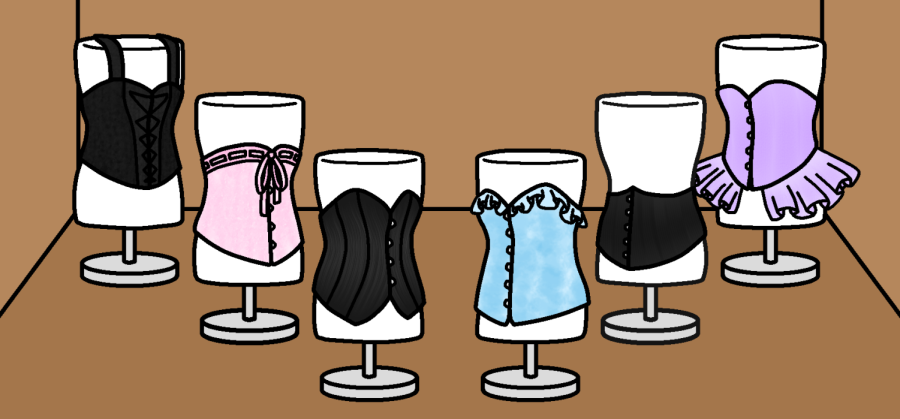The misleading history of corsets
Opinion editor Renee Gould ‘22 discusses an unusual item of clothing; corsets.
Modern corsets tend to have few drawbacks, as proper use will cause no health issues, and they can be found for relatively cheap on Amazon.
History
Corsets – an item of clothing intended to both support and shape the body – have been worn throughout history, from before even the 16th century. But they’re most well-known for the Victorian era when it was used to create an extreme hourglass shape as well as support the back and the chest. At first, it exaggerated the shoulders in order to achieve an hourglass with only moderate lacing, but as this style disappeared for smaller shoulders and a smaller waist, corsets were laced tighter, and it is thought that tightlacing first became popular in the 1840s and 1850s. Of course, many corsets still maintained padding at the bust and hips in order to make the waist appear smaller, and corsets were able to be mass-produced for the general public. Corsets made it easy to breastfeed and were primarily made by women, allowing them greater freedoms. Corsets were even being used as a way for many to express themselves, as fashion was one of the few aspects of life women had a great deal of control over.
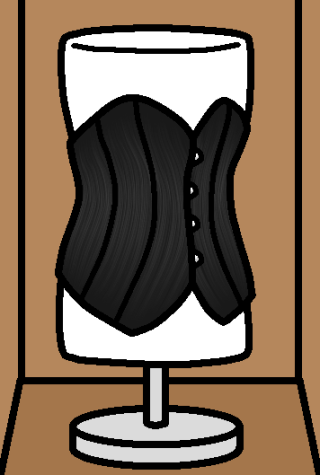
And then the 1900s hit and men threw a hissy fit. Health risks were heavily exaggerated, and the few horror stories of women who had regularly tightlaced were blown out of proportion and angered the general public. Doctors began to embellish health risks, and many diseases were said to be caused by wearing a corset. The myths that wearing a corset would break a women’s ribs, or rearrange their organs, or even cause infertility spread like wildfire. Many spoke out against corsets, with women calling for a change toward clothing that would allow them comfort and mobility. People thought that moving away from the corset would free women from dependence on men and marriage, and allow them to enter the workforce.
Later on, the creation of the swan-bill corset emerged, also known as the health corset, which was supposed to be a corset that did not have the health problems attributed to the Victorian corset. Though this corset lessened the pressure on the stomach, it drew the shoulders forward and pushed the hips back, to help exaggerate the popular bustles of the time. This position caused back pain and did not support the bust.
In 1914 corsets were lengthened and the goal was to squish the hips and it became incredibly cumbersome and uncomfortable to wear. To skip forward in history a bit; steel became scarce during world wars and corsets fell out of favor due to the lack of appropriate materials. In 1968, the Miss America protests called corsets “instruments of female torture”, and they were generally abandoned by the general populace.
The 1990s fetish fashion managed to bring corsets back into the public view, with cheaper, fashionable versions of the Victorian hourglass corsets appearing in fashion.
Benefits
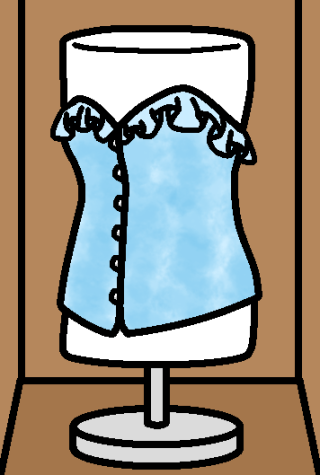
Modern corsets tend to have few drawbacks, as proper use will cause no health issues, and they can be found for relatively cheap on Amazon. The benefits can be great though.
Modern corsets have support for the back and the bust. Because they use compression to lift the bust, it’s a very supportive garment. It also is incredibly helpful with posture, as it forces the spine straighter, and naturally brings the shoulders back and down, compared to bras, which tend to bring the shoulders forward and down, and tend to encourage hunching. They also force you to lift with your legs, as you’re only able to bend with your waist, which makes it a lot harder to injure yourself when lifting heavy objects.
Corsets are also shockingly comfortable to wear. Though they do exert pressure on the abdomen, they don’t feel restrictive, and the strapless version allows for a full range of motion that simply doesn’t happen with a bra.
Types
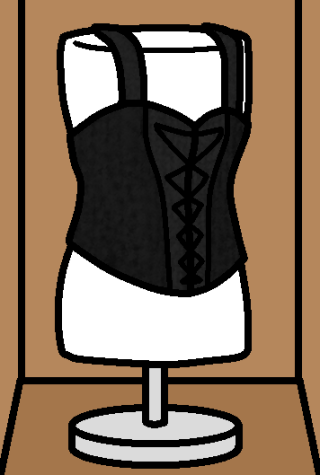
There are many different types of corsets. I mentioned a few in the history section, but the most well-known ones have a straight back, promote an hourglass shape, and are laced in either the back or the front. Corsets also have two types of lacing: waist training and tightlacing. Typically, you’ll find corsets that are meant to be worn underneath clothing, though there are sites where corsets are being designed as shirts within themselves. Personally, I only have those that are meant to be worn underneath a shirt. Typically, the ones intended to be worn as a shirt have shorter lacing, are only meant for waist training and have sleeves, whereas the ones intended for underclothing are a bit more versatile. As the lace is longer, it’s easier to tighten to the appropriate snugness, and you’re able to tightlace. Though some corsets do have straps, typically they’re only on those meant to be for waist training and underneath an item of clothing. Some have sleeves, often decorative and not supportive.
Tightlacing and waist training are also poorly defined categories, with there being a lot of debate over where the line between waist training and tightlacing should fall.
The line can be at a 4-inch reduction. However, this is fairly easy at a 40-inch waist, and far more difficult at a 24-inch waist. With larger waist sizes; larger reductions are easier to achieve, so a 4-inch reduction requires vastly different pressures on the body for someone with a larger waist than for someone with a 24-inch waist.
Another line is a 20% reduction or more. This is a bit better of a metric, as it takes into account the variety of waist sizes and the variances in pressure. For a 24-inch waist, this would be lacing to 19-inch, and for a 40-inch, it would lace to 32-inch. Something to note is that this has the 24-inch waist lacing an inch tighter (may not sound like much, but believe me, it’s a massive difference) and the 40-inch waist lacing three inches tighter; meaning that this tends to be more of a reduction than the 4-inch rule above.
Yet another idea is that tightlacing is highly dependent on the person’s squishiness, tolerance to restriction, hip spring, and a myriad of other factors. Personally; I favor this approach. A great example is to consider two people with the same size waist. One who has more fat in the abdomen and hips, and another with more muscle than fat in the waist. The one with more squish would be able to cinch down to a larger reduction, whereas the one with more muscle would cinch to a lower reduction. They’d both be tightlacing, and they’d both have the same starting waist, but due to their abdominal muscles; tightlacing works differently for them. Tightlacing under this definition is lacing to the point where it is a challenging (NOT painful) reduction.
Tightlacing
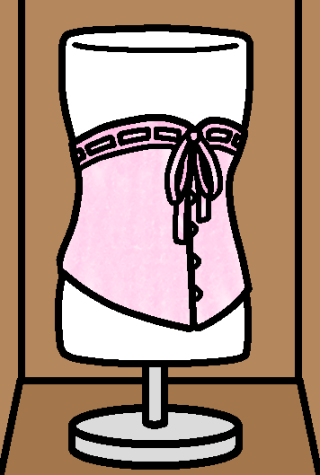
This is the form of lacing that was most often vilified during the 1900s. It is lacing a corset very tightly (not to the point of pain). It is used for a more exaggerated shape and is only meant to be worn as such for an hour or two at a time. No, this will NOT break a bone. The lace or the corset itself will break long before you get close to hurting your ribs. It does rearrange your body. The fat, that is. It pushes the fat up or down to help create the appearance of a very small waist. The more fat you have around your waist? The more dramatic the change will be.
Please note, that if you are a person with little fat around your waist, and mostly muscle; don’t tightlace. It’s not going to work. Squishing muscle is way harder and way more uncomfortable than squishing fat. Please do not tightlace if you don’t have a bit of chub to be squished around. Please do not tightlace for a long period of time. That’s not what it’s for. It feels a bit like getting a tight hug; it’s a bit hard to breathe, it’s not painful, but you can only stand it for a little while. Tightlacing for too long can have a similar effect to that of wearing a binder for too long; musculoskeletal injuries, rib injuries, etc.
Yes, it can make it harder to breathe. It becomes hard to take deep breaths from the stomach, and instead, you will end up breathing from the chest, with smaller, shorter breaths. This isn’t harmful unless you have a preexisting condition or decide to exercise while tightlacing. Always be sure to experiment with how tight you can tightlace and how long it feels comfortable, and always have a backup plan just in case. There should be no pain, you should not feel like you’re having trouble getting enough air, if that is happening you are lacing far too tight and need to stop.
Just be careful with tightlacing. Though almost all of the stories about how it impacts health are entirely false; it can be bad.
A tightlacing corset is also different from a waist training corset. Though a decent waist training corset can be used as a tightlacing corset, it’s not the best idea ever. A tightlacing corset will have steel bones, as plastic isn’t stiff enough to give the dramatic shape, and it will also likely only have double-stitched seams and very long laces. Please note; the steel bones will break before your ribs will. If the steel bones break; remove the corset immediately, get a new one, and don’t lace that tightly next time.
I do tightlace occasionally, however, the corset I use does have plastic bones. Though I cannot achieve quite the same shape, and the bones do tend to warp after I tighten enough, it’s cheaper than those with steel bones, and I rarely tightlace.
Waist Training
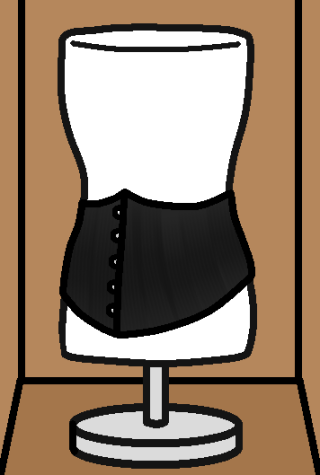
This form of lacing is meant to be worn all day and is less well-known. As its name implies; waist training is typically used by people who want a smaller waist in general, because over time, using a corset can make the waist smaller. It involves slowly tightening a corset, as is comfortable, over long periods of time, and can often end with a smaller waist even when not using a corset, though the waist will return to its original position if you go without waist training for long enough.
Personally; I find the smaller waist when not wearing a corset to be a simple perk. I, and many others, use waist training as simply being how we wear a corset in the day-to-day, as I would a bra. You don’t have to go in with the goal of getting a smaller waist without a corset. You can just wear one because they’re so much better!
Waist training involves much looser lacing. It will still be snug and supportive, but won’t have the same level of pressure as tightlacing. It’s intended to be worn throughout the day, and often the corsets meant to be worn as shirts are for waist training. Waist training corsets tend to have triple or quadruple stitched seams, more flexible bones, and shorter laces. Though again, a tightlacing corset can be used for waist training, note that a tightlacing corset may fall apart over time, as they are not intended for the same wear and tear as a waist training corset.
My corset is a waist training corset, though the laces are rather long. I find that the more flexible bones are good as they bend to my shape better, and are easier to manipulate while wearing; meaning I can still bend over easily while wearing it, though it does still force me to not slouch.
Wearing One for a Day
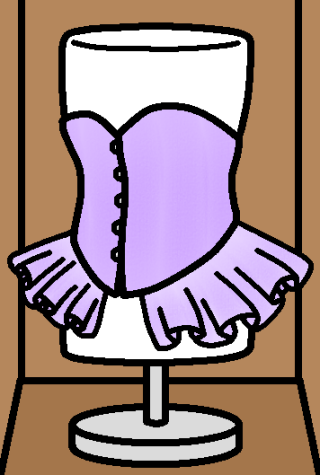
I wanted to test if it were actually possible to wear a corset for a full day at West High. Obviously, tightlacing won’t work for wearing all day, so I’ll be waist training with a 3-inch reduction. The most difficult thing was to find an outfit that fits well with my corset. As mentioned above, I use a corset intended to be worn under a shirt, which means that wearing pants is a bit difficult, as it ends at the curve of my hips, meaning that pants would either have to be pulled over the end (resulting in an odd flare visible through pants) or tucked under (which meant that the laces would be visible from the back of my shirt, plus just generally felt odd). So I decided on a skirt, pulled up to my waist, which worked quite well, as the corset was not overly visible, and the laces were safely tucked away (getting them caught on something is a rather poor experience).
From there, the corset was rather comfortable. I will say it did result in a bit of overheating; as it was a hot day and I was wearing a black sweatshirt. So I would suggest taking the weather into account, as it is a thicker layer, so possibly stay clear of warmer weather (100 degrees Iowa summers are not ideal…). However it absolutely made massive improvements to my posture, I ended up with no back pain at the end of the day, and wasn’t hunching through the day.
I will say that by the end of the day, I was ready to take it off. Partially due to the heat, and partially due to the pressure on my ribcage. A 3-inch reduction was a bit of a reach for me, as I had done a 2-inch previously for waist training. But I was overestimating my limits, and wanted to make sure that it wouldn’t be too loose. So make sure to listen to your body, and make sure you aren’t lacing a bit too tightly!
It was also rather nice to be able to wear the shirt I’d chosen for once. Said shirt required a strapless bra, and a corset is a perfect strapless and meant I could wear the shirt without being concerned about my bra straps showing.
Generally, it was a really good experience, and the corset worked very well! Though I will mention raising your hand makes things a bit… awkward. As you will likely have to ‘readjust’ and that’s not a particularly publicly accepted action. Try to keep your elbow roughly under your shoulder, and do the little half-raise when necessary.
Your donation will support the student journalists of West High School. Your contribution will allow us to purchase Scholarship Yearbooks, newsroom equipment and cover our annual website hosting costs.

(all) Renee Gould is a senior at West, it is their third year on staff and is currently the opinion editor for the online publication.

(she/her) Cassandra Michaels is a senior at West. This is her second year on the staff for the online publication as an artist. When she isn't busy she...


